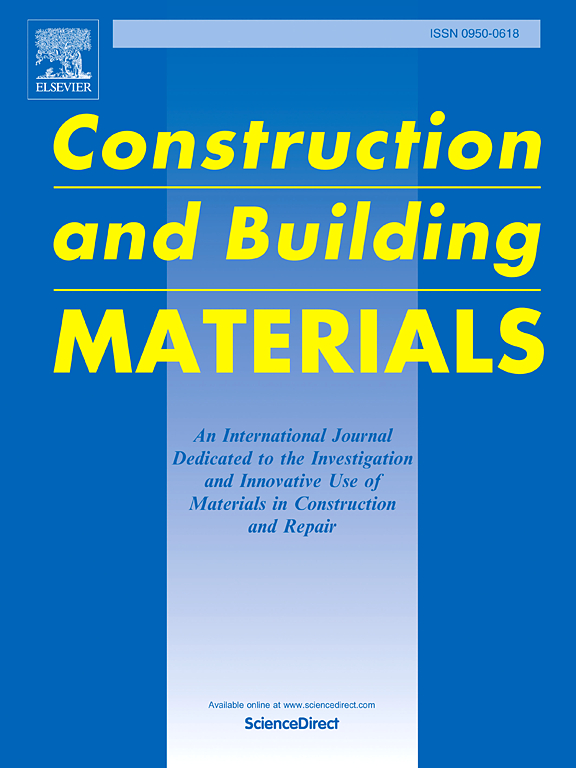Improving expansion and mechanical properties of sustainable high-strength lightweight concrete incorporating cold-bonded lightweight core-shell aggregates
IF 7.4
1区 工程技术
Q1 CONSTRUCTION & BUILDING TECHNOLOGY
引用次数: 0
Abstract
This research developed sustainable high-strength lightweight concrete (HS-LWC) with low-shrinkage characteristics by combining cold-bonded lightweight core-shell aggregates and expansion agent for concrete-filled steel tubes (CFSTs) and modular integrated construction (MiC) applications. The autogenous shrinkage of HS-LWC with diverse expansion agent contents (0–8%) was investigated, and its internal relative humidity was monitored. The expansive deformation of CFSTs filled with HS-LWC was explored. The mechanical properties and micro characteristics of HS-LWC were investigated. Moreover, a pilot-scale experiment was implemented in MiC factory to verify the reliability of HS-LWC in large-scale production. The potential energy savings of high-rise HS-LWC MiC buildings were analyzed by EnergyPlus software. The results demonstrated that with the increment of expansion agent content, the mechanical strength of HS-LWC increased significantly and then decreased due to the evolution of pore structures. The HS-LWC incorporating expansion agent exhibited higher mechanical strength than normal concrete, resulting from high-strength lightweight aggregates (LWAs), dense pore structures in mortar and good interfacial transition zone between LWAs and matrix. The circumferential expansion for CFSTs at an early age was beneficial for preventing the debonding between steel tubes and HS-LWC. The early micro-expansion behaviors of HS-LWC were mainly due to the synergistic effects of expansion agent and internal curing from LWAs. A content of 4% was recommended to acquire low-shrinkage HS-LWC with high compressive strength (> 70 MPa) and low density (∼1800 kg/m3). Furthermore, a mock-up concrete module demonstrated that the developed HS-LWC could be successfully adopted in constructing structures in MiC applications. The energy conservation of high-rise HS-LWC MiC buildings was obvious, saving 2–51% in cooling energy consumption and 26–55% in heating energy consumption.
求助全文
约1分钟内获得全文
求助全文
来源期刊

Construction and Building Materials
工程技术-材料科学:综合
CiteScore
13.80
自引率
21.60%
发文量
3632
审稿时长
82 days
期刊介绍:
Construction and Building Materials offers an international platform for sharing innovative and original research and development in the realm of construction and building materials, along with their practical applications in new projects and repair practices. The journal publishes a diverse array of pioneering research and application papers, detailing laboratory investigations and, to a limited extent, numerical analyses or reports on full-scale projects. Multi-part papers are discouraged.
Additionally, Construction and Building Materials features comprehensive case studies and insightful review articles that contribute to new insights in the field. Our focus is on papers related to construction materials, excluding those on structural engineering, geotechnics, and unbound highway layers. Covered materials and technologies encompass cement, concrete reinforcement, bricks and mortars, additives, corrosion technology, ceramics, timber, steel, polymers, glass fibers, recycled materials, bamboo, rammed earth, non-conventional building materials, bituminous materials, and applications in railway materials.
 求助内容:
求助内容: 应助结果提醒方式:
应助结果提醒方式:


